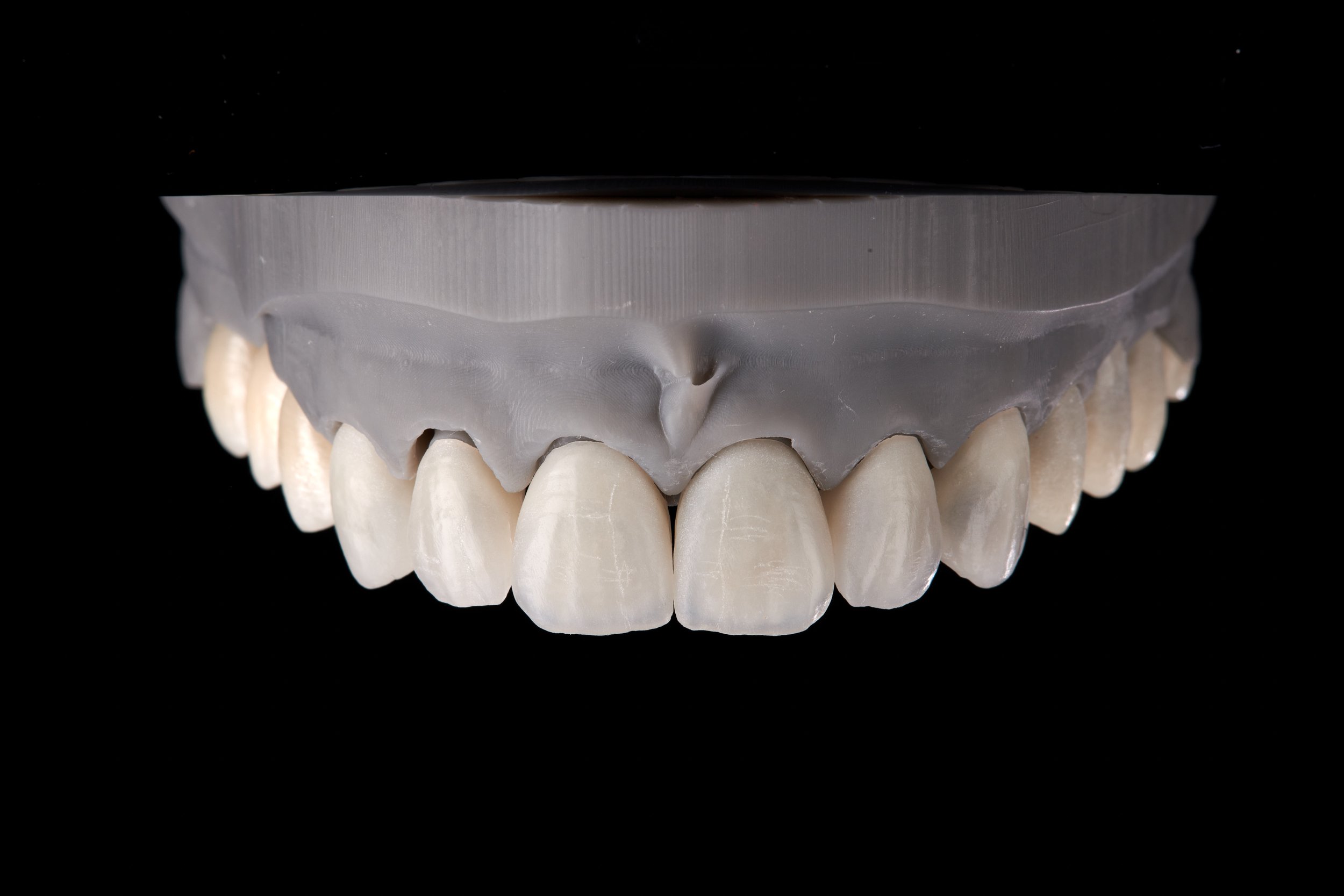How to work with a digital dental lab
When we talk about working with digital dental labs, it’s impossible not to mention the foundation of our own lab, dentesthetics. Our founders, the dentists Dr. Stefan Scholz and Dr. Sebastjan Varljen, started their digital journey in 2019:
Faced with the limitations of traditional analog methods, they envisioned something new for their clinic and lab and decided it was time for a change—a big change. They set out to create a digital dental lab that could integrate the newest technology, handle data with precision, and elevate their workflows to the highest level. And from that vision, dentesthetics was born.
From vision to reality: dentesthetics’ journey to a digital lab
What began as a bold commitment to digital dentistry has evolved into a full-service lab that not only supports our own digital dental clinic, but also partners with external practices across the field. From day one, our goal was clear: to build a lab that didn’t just embrace digital tools but thrived on them.
Today, we’ve left behind analog methods entirely. In our lab, there are no physical impressions, no plaster models, and no manual processes. Our workflows are 100% digital, allowing us to work faster, more precisely, and more predictably than ever before.
In this post, we’ll walk you through the essential steps for working with a digital dental lab: Find out how each phase can streamline your workflow, enhance precision, and lead to exceptional patient results.

Want to find out more?
Sign up to download out free lab guide!
What is the process of working with a digital dental lab?
In our digital dental lab, we have developed a streamlined workflow from data collection to final production. This workflow has been tested and proven over the years in collaboration with our dental clinic and has helped us improve treatment planning, enhance collaboration, reduce turnaround times, and deliver high-quality dental restorations. Let's take a closer look at each step in the digital workflow.
Data collection and avatarization
The digital workflow starts by gathering the patient data. Collect the files from the intraoral scan, facial scan, photos and jaw motion analysis to create a comprehensive digital patient avatar.
By securely storing the patient avatars in a dental cloud platform like SmileCloud, the dental team can access, analyze and collaborate on each case in real time. This cloud-based approach not only speeds up the process, but also provides a clear, accessible digital record for future reference.
Design creation with CAD
With the avatar in place, our digital lab starts creating the initial design using computer-aided design (CAD) software, such as Exocad or 3Shape. As a MODJAW-certified lab, dentesthetics takes things further by incorporating jaw motion data into our 4D designs.
This provides an exceptionally accurate assessment of jaw movements, enabling us to create restorations that seamlessly adapt to a patient’s natural movement patterns and occlusal relationships. Virtually test-driving the designs helps evaluate how the restorations will perform under real-life conditions. This process enables a perfect fit and natural function, which minimizes adjustments and ensures a higher level of patient comfort.
Case refinement through collaboration
Once the design is uploaded to the dental cloud, a collaborative dialogue begins between the dentist and our lab team.
Clinicians and technicians exchange case details, suggest refinements, and make real-time adjustments. This active collaboration ensures the design aligns perfectly with clinical goals, creating a more efficient workflow and achieving the best outcome for the patient.
Mock-Up and design approval
After refining the design, it is time to present the treatment plan to the patient. The mock-up phase helps patients visualize the planned results, allowing them to see how their smile will look after treatment. If desired, the dentist can even test the design directly in the patient’s mouth using a motivational mock-up.
The step aligns treatment expectations and fosters patient confidence since it ensures that the final outcome matches their vision. Once the patient approves the design, the lab can proceed with the manufacturing process.
Manufacturing process with CAM
Once the design is refined and approved, the digital lab starts the manufacturing process using CAM (computer-aided manufacturing) technology.
Denesthetics uses in-house 3D milling machines to work with a variety of materials, including ceramics and zirconia. The advanced CNC technology ensures consistently high quality and accuracy of fit, ultimately leading to improved patient care.
Different types of 3D printers, such as FDM (Fused Deposition Modelling), SLA (Stereolithography) and DLP (Digital Light Processing) can be used to print various dental models, splints, aligners, surgical guides, both temporary and definitive crowns and prostheses. This versatility in CAM technology enables the lab to create bespoke dental restorations tailored to specific clinical needs with speed and accuracy.
Get ready to partner with us
In the world of modern dental care, collaborating with a digital dental lab is essential to provide exceptional patient outcomes. At dentesthetics lab, we are constantly innovating and refining our digital workflows to support our partners and enhance the quality of dental care.
By fully embracing digital processes, our lab enables practices to deliver restorations with increased accuracy and speed, improving both clinical outcomes and patient satisfaction. Join us in advancing the future of dentistry, one digital step at a time!


